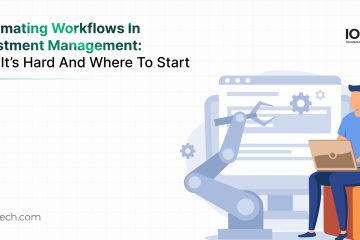Increasing trade volumes and evolving regulations are driving a wave of digital modernization within the capital markets ecosystem. With cryptocurrency users soaring to over 320 million in 2022—a 150% increase from the previous year—the pressure to scale systems is more significant than ever.
This begs the question: Are current trading systems built for scale, and if not, what can brokerages do to accommodate new users/ asset classes and manage growing trade volumes?
What Can Brokerages Do to Scale Their Systems?
Embrace Cloud-Native Architectures
Building trading systems on modular architecture like microservices helps break down applications into smaller, independent services. Each service can be developed, deployed, and scaled independently, enhancing fault tolerance and operational efficiency. Coinbase has over 100 microservices, each dedicated to specific functions such as user authentication, trading engine operations, wallet management, and more. This architecture ensures that each service can scale to meet user demand without affecting the entire platform. In 2021, during periods of high trading volume, Coinbase successfully processed over 100,000 transactions per second (TPS).
Implement Serverless Computing
Serverless computing allows FinTechs to run code without managing servers, automatically scaling based on demand. This reduces overhead and enhances operational efficiency. Various FinTech firms employ AWS Lambda to execute trading algorithms and manage back-end services dynamically, scaling in real-time to meet user demand.
By using AWS Lambda, Capital One developed a fraud-detection application that monitors and analyzes transactions in real time, identifying potential fraud. This serverless approach has enabled Capital One to scale its fraud detection capabilities dynamically, ensuring robust security without incurring the costs of maintaining a large infrastructure.
Robinhood’s lean staff, including just two DevOps people, use AWS to massively scale their securities trading app, which has strong built-in security and compliance features.
Adopt an API-first Approach
This approach to designing systems with APIs at the core allows easy integration with third-party services/platforms. It aims to boost scalability by allowing different parts of a trading system to be developed, deployed, and scaled independently. This means new features can be added, and user capacity can be increased without needing a full system overhaul.
We worked with a prominent Wall Street brokerage solutions provider to implement cloud migration and an API-first approach to scaling their legacy trading platform. With an API-first approach, they saw a 200% increase in transaction volumes with a 40% reduction in operational costs.
Wrapping up
Viewing scalability as a single metric can be limiting. While crucial, scalability should be considered part of a broader transformation strategy. When brokerages focus on scalability in isolation, they risk missing out on the holistic benefits of modernization.
As Robinhood scaled (their tech stack supports over 10,000 data sources and processes multi-petabyte datasets) to handle a significant user surge during the 2021 trading frenzy, it wasn’t merely about managing increased traffic – it was about maintaining a seamless user experience, ensuring data integrity, and staying compliant with regulatory requirements.
Also, remember that as firms scale, their regulatory obligations grow. Scalability brings immense benefits but requires firms to think strategically about other critical factors like user experience, data integrity, and operational efficiency. By doing so, brokerages can be future-ready, meeting increased expectations and thriving in a growing market.


